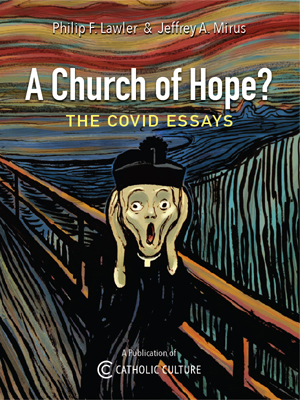Modernism | What You Need to Know
As the name implies, Modernism is an ideology by which religious truths, and especially Catholic teachings, are derived and interpreted in accordance with personal religious experience, under the influence of the spirit of the current age. First emerging in the late 19th and early 20th centuries, Modernism was condemned by Pope St. Pius X in 1907. It resurfaced as part of a powerful accommodationist trend in the years following the Second Vatican Council, significantly weakening the Church’s response to modern secularism.
Free eBook:

|
| Free eBook: A Church of Hope? |
Essential Perspective
- Manifestations of Modernism
- Under the Ban: Modernism, Then and Now
- Pope St. Pius X On the Doctrine of the Modernists (Pascendi)
Extra Reading
Two months before Pope St. Pius X promulgated his condemnation of Modernism in Pascendi, the Holy Office had issued a syllabus of 65 widespread modern errors in the document Lamentabili sane. While the simple enumeration of errors has gone out of fashion in recent years (presumably in part because the brevity of expression does not permit a significant exploration of the relevant problems), Lamentabili is of particular value both because of the unifying background the Pope later provided in his encyclical, and because many of the listed ideas are so recognizable today, despite being formulated over a century ago.
A search on CatholicCulture.org for “Modernism” brings up a wealth of other materials which may be of interest for further research.






